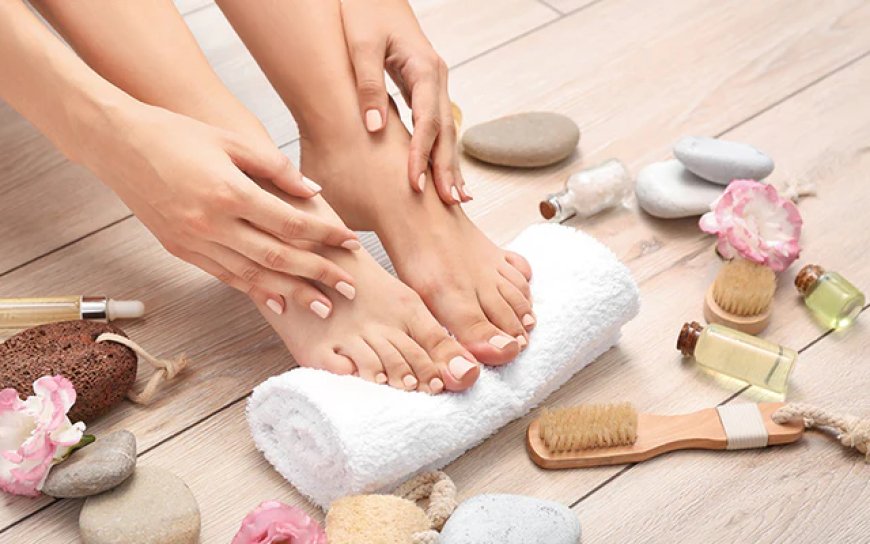The Ultimate Guide to Foot Care: Tips for Healthy Feet
Proper foot care is essential for maintaining comfort and preventing common foot problems. By following these tips—such as practicing daily hygiene, moisturizing your feet, choosing the right footwear, and managing foot issues—you can keep your feet healthy and pain-free. Remember, taking good care of your feet contributes to your overall well-being and enhances your quality of life.
The Ultimate Guide to Foot Care: Tips for Healthy and Comfortable Feet
Introduction
Foot care is often overlooked, but maintaining healthy feet is crucial for overall well-being. Your feet support your entire body and are essential for mobility. Proper foot care helps prevent common issues such as blisters, calluses, and fungal infections while promoting comfort and health. This comprehensive guide covers essential tips and practices for keeping your feet in top shape.
1. Practice Daily Foot Hygiene
Maintaining cleanliness is the foundation of good foot care:
- Wash Your Feet: Clean your feet daily with mild soap and warm water. Use a soft washcloth or your hands to gently scrub the tops and soles of your feet. Be sure to clean between your toes to remove any dirt and moisture.
- Dry Thoroughly: After washing, dry your feet completely, especially between the toes, to prevent moisture buildup, which can lead to fungal infections.
2. Keep Your Feet Moisturized
Moisturizing helps prevent dry, cracked skin:
- Apply Lotion: Use a foot cream or lotion daily to keep your skin soft and hydrated. Focus on areas prone to dryness, such as the heels and balls of your feet.
- Avoid Between Toes: Be cautious not to apply lotion between your toes, as excess moisture in this area can increase the risk of fungal infections.
3. Trim Your Toenails Properly
Proper toenail care prevents issues like ingrown nails and infections:
- Trim Regularly: Cut your toenails straight across to prevent ingrown toenails. Avoid cutting them too short or rounding the corners.
- Use the Right Tools: Use sharp, clean nail clippers or scissors designed for toenails. If needed, consult a podiatrist for nail trimming if you have specific concerns.
4. Choose the Right Footwear
Wearing appropriate shoes is crucial for foot health:
- Fit and Comfort: Select shoes that fit well and provide adequate support. Ensure there is enough room in the toe box to avoid cramping and discomfort.
- Arch Support: Choose shoes with good arch support to reduce strain on your feet and prevent conditions like plantar fasciitis.
- Heel Height: Avoid high heels or shoes with inadequate support. Opt for shoes with a low, comfortable heel and cushioning.
5. Protect Your Feet from Injuries
Preventing injuries is key to maintaining healthy feet:
- Wear Protective Footwear: When walking on rough or potentially hazardous surfaces, wear appropriate protective footwear. This is especially important in environments where you might step on sharp objects or encounter extreme temperatures.
- Avoid Walking Barefoot: Refrain from walking barefoot in public places or on hard surfaces to reduce the risk of cuts, blisters, and infections.
6. Manage Foot Odor
Foot odor can be managed with proper care:
- Change Socks Regularly: Wear clean, moisture-wicking socks daily and change them if they become damp. Avoid wearing the same pair of socks for extended periods.
- Use Antifungal Powder: Apply antifungal or antibacterial powder to your feet and inside your shoes to control odor and reduce moisture.
7. Address Common Foot Issues
Taking care of common foot problems can prevent them from worsening:
- Blisters: Avoid popping blisters. If a blister forms, protect it with a clean bandage and allow it to heal naturally.
- Calluses and Corns: Use a pumice stone or foot file to gently remove calluses and corns. Avoid using sharp objects to cut them, as this can cause injury.
- Fungal Infections: If you notice signs of fungal infections like athlete’s foot or toenail fungus, use over-the-counter antifungal treatments and consult a healthcare professional if symptoms persist.
8. Practice Foot Exercises
Foot exercises can enhance strength and flexibility:
- Toe Stretches: Stretch your toes by pulling them gently with your hand or using a towel. This helps maintain flexibility and reduce stiffness.
- Foot Strengthening: Perform exercises like toe curls or picking up small objects with your toes to strengthen foot muscles.
9. Get Regular Foot Check-Ups
Regular check-ups can identify and address potential issues early:
- Visit a Podiatrist: Schedule annual visits to a podiatrist or healthcare professional for a comprehensive foot examination, especially if you have underlying health conditions like diabetes.
- Monitor Changes: Pay attention to any changes in your feet, such as unusual swelling, pain, or color changes. Seek professional advice if you notice persistent or concerning symptoms.
10. Maintain Overall Health
Overall health impacts foot health:
- Healthy Diet: Eat a balanced diet rich in vitamins and minerals to support overall health, including healthy feet. Nutrients like calcium and vitamin D are important for bone health.
- Stay Active: Engage in regular physical activity to promote circulation and maintain a healthy weight, which reduces stress on your feet
What's Your Reaction?








